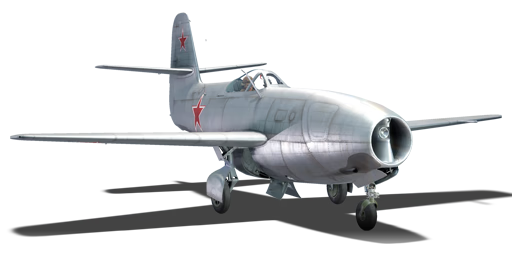



The Yak-23 was developed as a further upgrade to the Yak-15 and Yak-17 designs. It was one of the first Soviet single-seat jet engine fighters. Like its predecessors, it used the existing fuselage and airframe of the Yak-3 piston fighter and adapted an engine to it, specifically the Klimov RD500 turbojet engine. The Yak-23 saw limited success compared to more famous MiG-9, but it was still produced in decent numbers. With a total of 319 units built (prototypes included), it also served in the air forces of different nations allied with the USSR like Poland, Romania, Albania, Bulgaria, North Korea, and Czechoslovakia.
It was introduced in Update 1.75 "La Résistance". The Yak-23 is a weird jet at its BR. Compared to other common jets like the MiG-15bis or the A-4E Skyhawk, the Yak-23 has the airframe of a prop and that comes with some advantages. Like most props, the Yak-23 has a good turn radius when not at high energy states. When it has a lot of speed, the Yak-23 compresses a lot and it does not have an airbrake to lose that speed nor the airframe to allow it to do so. Also, thanks to its powerful engine with excellent acceleration, it is ideal staying at around 700-800 km/h in a fight to retain energy in turns and also use the maximum agility of the Yak-23. The guns in this jet are ok, with a decent speed and belts with HE you can consistently destroy other players with a few bursts and good aim once you learn the ballistics of the gun.
flaps
flaps
flaps
brake
| Belt | Belt filling | Armor penetration (mm) at a distance: | |||||
|---|---|---|---|---|---|---|---|
| 10 m | 100 m | 500 m | 1000 m | 1500 m | 2000 m | ||
| AP-I/FI-T | 32 | 30 | 22 | 15 | 10 | 7 | |
| FI-T/AP-I/AP-I/AP-I | 32 | 30 | 22 | 15 | 10 | 7 | |
| FI-T/FI-T/FI-T/AP-I | 32 | 30 | 22 | 15 | 10 | 7 | |
| AP-I | 32 | 30 | 22 | 15 | 10 | 7 | |












Flight performance | |
|---|---|
Survivability |
|---|
Weaponry |
|---|